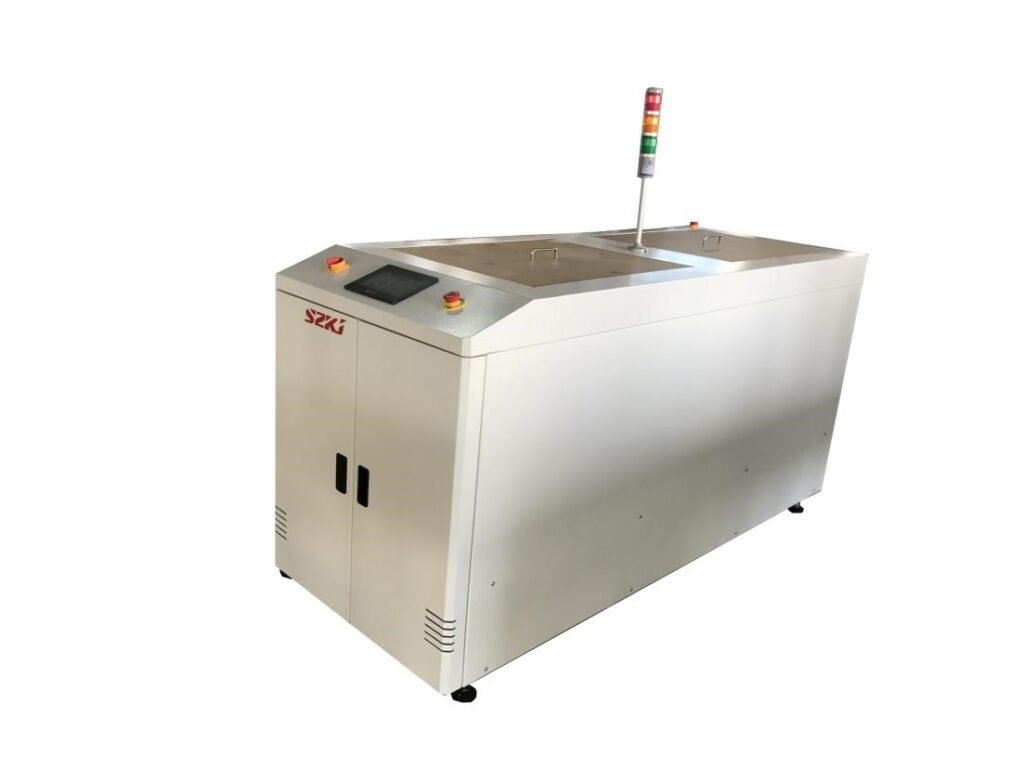What is the difference between SMT and semiconductor?

In electronics manufacturing, understanding technical terms is vital for engineers, suppliers, and decision-makers alike. SMT and semiconductor are two concepts that are frequently confused within the electronics industry. Though these concepts are interconnected within the production ecosystem, they represent entirely different domains. Knowing their differences helps in navigating discussions about manufacturing processes, supply chains, and technological innovations in the electronics industry.
This article breaks down the core differences between SMT and semiconductors while highlighting their roles in modern electronics. It also explores the importance of supporting systems such as SMT peripheral equipment, which plays a significant role in assembly line efficiency.
Defining the two concepts clearly
SMT, or Surface Mount Technology, refers to a method of assembling electronic components onto the surface of a printed circuit board (PCB). It is a production process involving steps like solder paste printing, component placement, reflow soldering, and inspection. SMT allows for compact, high-density PCB designs and has become the standard for manufacturing most electronic devices.
Semiconductors, on the other hand, are materials with electrical conductivity between conductors (like metals) and insulators (like ceramics). These materials serve as the core building blocks for devices like diodes, transistors, and integrated circuits (ICs). A semiconductor device manipulates electric signals and forms the backbone of almost all modern electronics.
In summary:
- SMT = Assembly technology and manufacturing process
- Semiconductor = Material and components enabling electronic functionality
The distinction lies in their nature—SMT is about how components are mounted, while semiconductors are about what the components are made of and how they operate.
See also: Luxe Lift: When You Want Support with a Side of Elegance
Their roles in electronics manufacturing
SMT provides a systematic approach to placing and soldering components on a PCB. It supports mass production of electronic assemblies with precision and speed. Key stages in SMT include:
- Applying solder paste to PCB pads
- Positioning components like resistors, capacitors, and ICs (many built from semiconductor materials)
- Reflow soldering to secure components
- Inspection and testing for defects
Semiconductors are integral to the components handled in SMT. They form the core of microprocessors, memory chips, and power management systems. Without semiconductors, there would be no components to assemble using SMT.

Key differences outlined
To illustrate the contrast, consider the following distinctions:
- Nature: SMT is a manufacturing method, while semiconductors are materials or devices.
- Function: SMT assembles components; semiconductors enable those components to function.
- Focus: SMT focuses on placement and soldering; semiconductors focus on signal processing and storage.
- Scope: In terms of scope, SMT utilizes tools such as pick-and-place systems and reflow ovens, whereas semiconductor production focuses on wafer processing and doping techniques.
Recognizing these differences clarifies their separate, yet complementary, roles in the electronics industry.
Supporting systems for effective assembly
A typical SMT production line relies on several types of equipment to achieve seamless operation. While the core machines like solder paste printers and pick-and-place systems handle essential tasks, SMT peripheral equipment ensures the workflow remains uninterrupted.
Peripheral systems include:
- PCB loaders and unloaders
- Conveyor systems to transfer boards between machines
- Inline inspection stations to monitor quality
- Buffer units that maintain efficiency during machine changeovers
These devices streamline production, reduce manual intervention, and improve overall line performance.
Common misconceptions clarified
Many people mistakenly believe that SMT and semiconductors mean the same thing because of their close association in electronic manufacturing. However, this assumption overlooks their distinct purposes: SMT assembles the components, while semiconductors form the functional core of those components.
Another misconception is viewing SMT equipment as responsible for creating semiconductor devices. In reality, semiconductor manufacturing is a highly specialized field involving cleanrooms, lithography, and wafer fabrication—entirely separate from SMT processes.
Why understanding the difference matters
Knowing the distinction between SMT and semiconductors is crucial for:
- Design engineers, to specify components correctly and optimize assembly processes.
- Procurement teams, to source the right materials and equipment without confusion.
- Manufacturers, to align production capabilities with technological requirements.
Clarity here avoids miscommunication that can lead to costly delays or incorrect equipment purchases.
Additional factors impacting electronics production
Beyond SMT and semiconductor considerations, modern electronics manufacturing requires attention to factors such as:
- Supply chain reliability for semiconductor components
- The adaptability of SMT production lines allows them to accommodate a wide variety of product designs.
- Integration of advanced inspection systems for higher yield
- Investment in peripheral equipment to enhance productivity
These elements together determine the efficiency and cost-effectiveness of electronics assembly.
Final thoughts
Although SMT and semiconductors are closely connected in the world of electronics, they serve entirely different functions. SMT defines how electronic components are assembled onto PCBs, while semiconductors form the materials and devices enabling the functionality of those components.
By understanding this difference, stakeholders can make more informed decisions regarding equipment investment, production planning, and supply chain management. In addition, giving proper consideration to both core machines and SMT peripheral equipment ensures a robust and efficient manufacturing environment.
This clear distinction helps professionals align their strategies with the technical and operational realities of modern electronics production.



